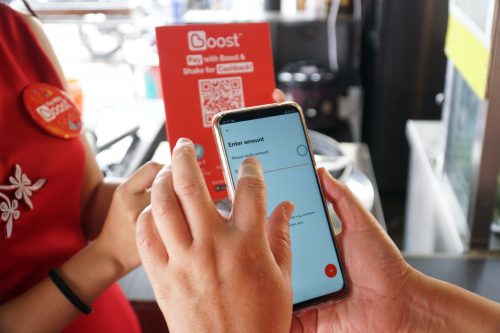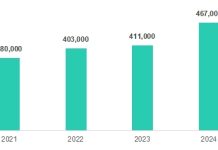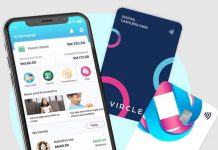
Following an exceptional year of growth in revenues and product innovation, Boost, the fintech arm of Axiata, is now setting its sights expanding its suite of services and deepening its regional presence. Boost has evolved from a digital payment provider into a full spectrum fintech company, with ambitions to enter into digital banking to serve consumers and merchants across Southeast Asia (SEA).
Sheyantha Abeykoon, CEO of Boostsaid, “From our earliest days in 2017, our mission was to serve the underserved segments’ inclusion through scalable technology platforms. We have built our capabilities over the past four years that strengthens our ability to meet the financial requirements of consumers and small businesses.
“Today, our fintech business is operated by five different entities – Boost Life, Boost Biz, Boost Credit, Boost Connect and Boost Indonesia, making us one of the few fintech companies to operate a payment, lending, merchant solutions and cross border remittance platform at scale in Malaysia. We take pride in having pioneered and promoted the adoption of many services that have now got mainstream market adoption such as QR code based payments and alternative credit based lending solutions for micro-SMEs.”

Reflections
In 2020, Boost attracted a strategic US$70 million investment from Great Eastern for 21.875 percent stake in the business to drive and expand fintech solutions regionally.
A year later in June 2021, Axiata and RHB formed a consortium to apply for a digital banking license from Bank Negara Malaysia. As equity partners in the consortium, Boost will own a majority stake of 60 percent, while RHB will own the remaining 40 percent in the digital bank.
The platform became the first digital banking license hopeful to sign a Memorandum of Understanding with Credit Guarantee Corporation Malaysia Bhd for a potential digital bank guarantee.
Boost has also partnered with GHL, Lazada and Foodpanda to offer micro-financing solutions such as working capital, supply chain financing and invoice financing, along with micro-insurance products to MSMEs via Boost Credit.
On the regional front, Boost has been active in Indonesia being a key growth engine. In May 2021, it completed a 68.75 percent equity acquisition in an Indonesian licensed entity, PT Creative Mobile Adventure which operates a telco supply chain model financing business under the brand KIMO.
Today, Boost Indonesia has grown 5X year-on-year through the pandemic to disburse upwards of IDR 250 billion per month, making it one of the largest P2P operations in all of Indonesia.
Boost’s cross-border content services business, managed through Boost Connect, has also seen considerable gains over the past year. In January 2021, Boost Connect launched a Storefront for Smart Cambodia to tap into the smart game voucher market. In May 2021, working with Celcom, it rolled out a bundling platform for games and entertainment offerings and later, launched ‘Game Connect’ for Boost Life targeted at gamers looking for vouchers and gaming hardware in one place.
Boost Connect now serves approximately one billion customers and over 100 digital partners. gross transaction value (GTV) grew 60 percent year-on-year (YoY) while net revenue increased by 88 percent in 2021 versus 2020. Meanwhile, Boost’s overall fintech business saw its topline doubling YoY: In 2021, it recorded RM4,911 million GTV, more than double the GTV in 2019 and a 30% increase from 2020.
“Boost’s cross border business has picked up steam over the past couple of years. We’re constantly bringing exciting new offerings to gamers and entertainment addicts and this year, consumers can expect to enjoy better convenience for Google Play and subscribing to TVB as well as several streaming video service providers,” said Raja Mansukhani, CEO of Boost Connect.
Evolution in Boost
In the next three years it is expected that digital financial services will flourish in Southeast Asia. This increasing trend was also reflected in Boost’s Malaysian user- and merchant-base growth. By end of 2021, its user base grew to over 9.6 million. Boost also nearly doubled its merchant base to over 438,000 merchant touchpoints compared to end of 2020.
In addition, Boost has taken steps to ensure that MSMEs in the region have access to these digital transformation tools. Through its merchant business Boost Biz, the company has created an ecosystem that makes it easier for merchants to shift from offline to online. Its Boost Business Payment Link has seen a GTV growth of 90% from 2020 to 2021.
The e-Conomy SEA 2021 report also outlined that digital financial services, especially lending, will continue to flourish tremendously until 2025. The regional loan book grew by 48% from 2020 to 2021 with a 31% growth momentum expected until 2025.
Last year alone, Boost Credit’s loan book in Malaysia and Indonesia grew healthily with total GTV of loans disbursed increased by about 13X and 55X respectively over two years from 2020 to 2021.
Additionally, non-performing loan ratios from both Malaysia and Indonesia remained at single digit at below 3 percent and below 1 percent respectively, despite a challenging past two years. With that, Boost Credit earned a preliminary A1 stable and sustainable rating by RAM Ratings.
2022 and beyond
For its next steps, Boost will be prioritizing the expansion of its Buy-Now-Pay-Later (BNPL) products in 2022. It is in a unique position to dominate this space in Malaysia having the basic tenets to build the business; a large active consumer base, an expansive merchant network, settlement and payment infrastructure, and best in class digital underwriting and collection capability.
The company will also be expanding its B2B platforms with a goal to enable SMEs to participate more broadly in the digital economy. Boost recently launched a food delivery platform called Boost Makan and is working on launching a platform for SMEs to source raw materials at competitive rates.
For consumers, the recently announced partnership with Mastercard will focus on the issuance of physical and virtual prepaid payment cards this year.
“The business opportunity for Boost through the Mastercard partnership is huge with more than 65% of eWallet top ups on Boost occurring via online banking today. This represents a big potential user base who will benefit from the convenience of having a physical or virtual prepaid payment card for their transactions, on top of their eWallet spend,” said Karthik Bhaskaran, Boost’s chief product & innovation officer.
Boost will also be reinvesting in its customers in 2022 and beyond. The most recent initiative was a refresh of BoostUP, its loyalty program based on three key principles – increasing intrinsic value of the loyalty program via expansive rewards, a more transparent and simpler earn structure, and enabling an easier tier up system.














